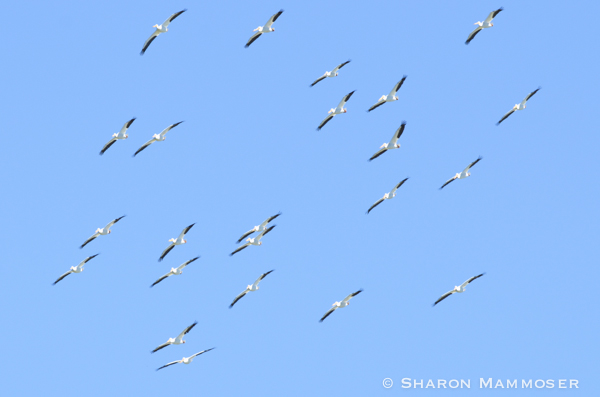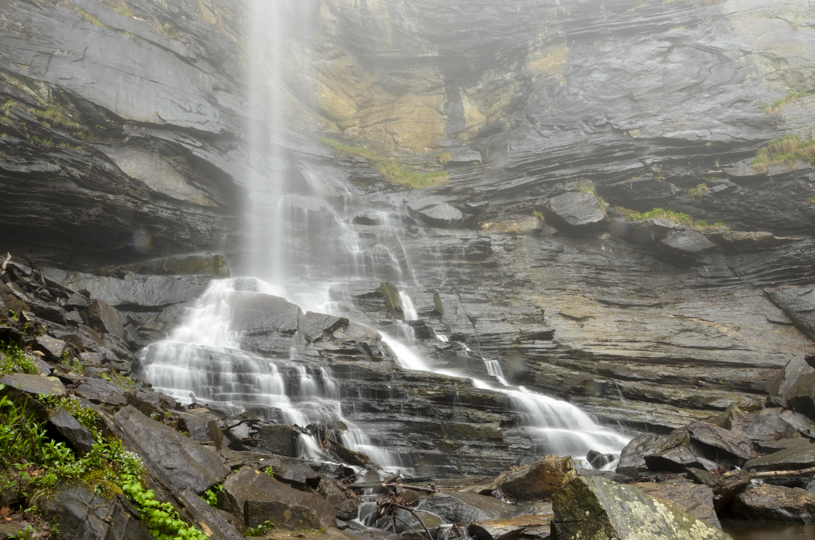 White pelicans in a large group soaring through the sky is a pretty amazing sight. They seem like they never have to flap their wings at all, just riding the thermals, high above the earth. There is so much about them that is interesting… so let’s get started.
White pelicans in a large group soaring through the sky is a pretty amazing sight. They seem like they never have to flap their wings at all, just riding the thermals, high above the earth. There is so much about them that is interesting… so let’s get started.
1. First off, white pelicans have one of the largest wingspans of any North American bird. At 9 feet, this is impressive!
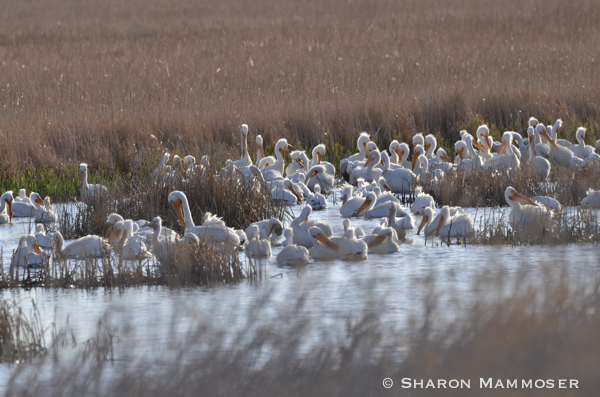 2. You can probably guess that white pelicans eat fish, but did you know that they sometimes work together to herd fish to more shallow water where they can feast on them more easily?
2. You can probably guess that white pelicans eat fish, but did you know that they sometimes work together to herd fish to more shallow water where they can feast on them more easily?
3. From the time an egg hatches til the chick leaves the nest and becomes independent, the parents provide roughly 150 POUNDS of food!
4. White pelicans are pretty accomplished thieves, stealing from other pelicans and cormorants so they don’t have to do the work themselves.
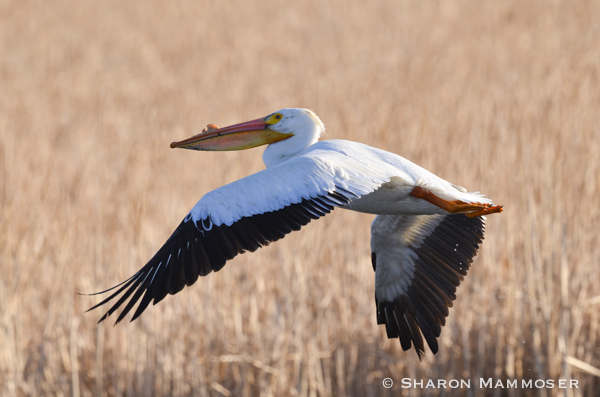
5. Have you ever looked closely at a pelican and noticed an odd projection on its bill? When I was in Kansas last winter, it seemed like all of the white pelicans we were seeing had this weird bump on the upper mandible near the tip of the bill. I wondered about it, thinking it was some kind of genetic deformity. After all, I had seen white pelicans before that did not have this hump. But research showed that they have this odd bump during the breeding season–apparently, it makes them more attractive to prospective mates! Go figure. Interestingly, this is called a nuptial tubercle and it will fall off after the breeding season.
6. White pelicans breed on islands in shallow wetlands with many other birds, including other white pelicans and also cormorants. 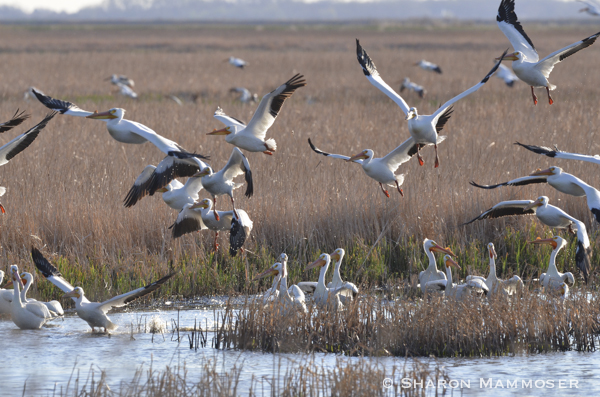
7. Unlike brown pelicans that fly high above the water and then dive down into the water to catch their prey, white pelicans get their food by feeding from the water surface, dipping their beaks into the water to snag fish and other aquatic animals.
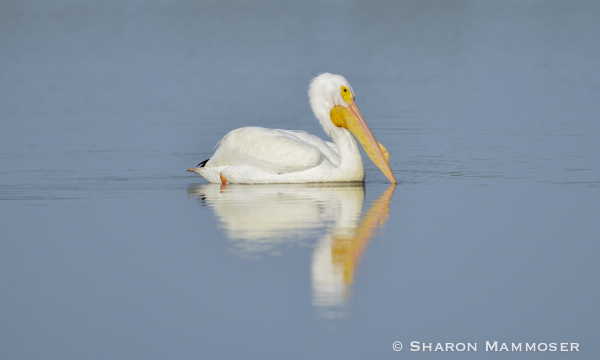
8. White pelicans are one of the heaviest flying birds in the world. An average white pelican weighs between 7 – 20 pounds.
9. Females lay 1-3 eggs in a slight depression in the ground. Both the male and female will incubate the eggs–not the way other birds do, but with their giant orange feet! Eggs hatch in about a month and usually, only one will survive to leave the nest. Chicks leave the nest–fledge–when they are about 10 weeks old.
10. Except for the fact that males are slightly larger than females, the two appear identical.
